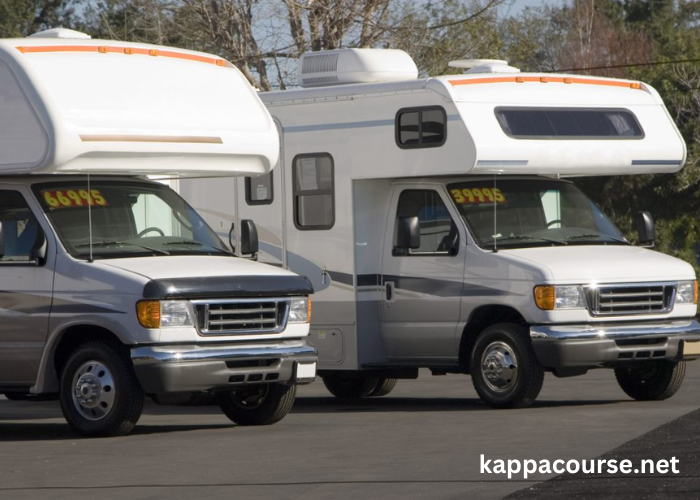Selling your RV is a big decision, whether you’re upgrading to a new model or stepping away from the RV lifestyle altogether. It’s a unique asset, and selling it requires a careful strategy to ensure you get the best price while navigating through the process smoothly. Whether it’s a motorhome, travel trailer, or camper van, here’s a comprehensive guide to selling your RV, covering everything from preparation to closing the deal.
Evaluate Its Worth
The first step in selling your RV is understanding its current market value. Several factors influence the value of your RV, including:
- Make, model, and year: Newer models and luxury brands usually retain value better.
- Condition: Well-maintained RVs with minimal wear and tear fetch higher prices.
- Mileage: Just like cars, RVs with lower mileage are more attractive to buyers.
- Extras and upgrades: Any modifications like solar panels, upgraded furniture, or tech installations may increase the price.
- Market demand: Prices can fluctuate depending on the time of year and regional demand.
You can assess your RV’s value using online tools like NADA Guides, Kelley Blue Book, or checking similar listings on popular RV marketplaces. Getting a professional appraisal or asking dealers for trade-in quotes can also provide insights into the market price.
Prepare Your RV for Sale
Once you have a sense of your RV’s worth, it’s time to prepare it for sale. A well-presented vehicle is more likely to attract buyers and command a better price. Here are some tips:
-
Clean and Detail Your RV
A clean RV creates a good first impression. Wash the exterior, scrub the roof, and clean the awnings. Inside, vacuum carpets, polish surfaces, and clean all appliances. Remove any personal items so potential buyers can envision themselves in the space. A professional detailing service can be a worthwhile investment, especially for higher-end RVs.
-
Make Minor Repairs
Address any minor issues that could deter buyers, such as a leaky faucet, worn-out seals, or broken lights. Replacing old batteries, checking tire condition, and ensuring the HVAC system works properly can help avoid negative feedback. Providing a list of recent maintenance and repairs gives buyers confidence that the RV has been well cared for.
-
Stage the Interior
Consider staging your RV to make it look cozy and inviting. Simple touches like fresh linens, throw pillows, or neutral décor can enhance the appeal of your RV. Buyers are looking for comfort and functionality, so ensuring that your RV looks like a livable space is key.
-
Gather Documentation
Having your paperwork organized will streamline the sale. Ensure you have:
- Title (or lien release if applicable)
- Maintenance records
- Owner’s manual
- Warranty information (if still valid)
- Any documents related to installed upgrades or repairs
Buyers appreciate transparency, and well-documented records will demonstrate that you’ve taken care of the vehicle.
Choose Where to Sell Your RV
There are several avenues available for selling an RV, and choosing the right one depends on your timeline, the condition of the RV, and how involved you want to be in the process.
-
Private Sale
Selling your RV privately can often yield the highest returns, as there are no dealer commissions or trade-in markdowns. You’ll need to handle all aspects of the sale, from advertising and negotiations to paperwork. You can list your RV on platforms like:
- RV Trader
- Craigslist
- Facebook Marketplace
- eBay Motors
- Local classified ads
The key to success here is creating a detailed, compelling listing that highlights the RV’s features and benefits.
-
RV Dealership
If you’re looking for convenience, selling to or through a dealership is an option. Dealerships can either buy your RV outright or take it on consignment. While this method may not yield the highest price, it can save you time and hassle, especially if your RV is in excellent condition and fits their inventory needs.
- Trade-in: If you’re buying another RV, you can offer yours as a trade-in. While you might not get top dollar, it simplifies the transaction.
- Consignment: Dealerships sell the RV on your behalf and charge a commission. You’ll likely get a better price than a trade-in, but less than selling privately.
-
Online RV Marketplaces
In addition to RV-specific websites, general online marketplaces like Autotrader or RVT.com are popular for RV sales. These platforms attract a large audience and are often user-friendly. Some offer additional services like financing and shipping, making it easier for potential buyers.
-
Auction
For a quick sale, you can list your RV at an auction, either online or in person. Websites like eBay Motors or specialty RV auction houses can help you sell fast, though the price might not be as high as you’d get through a private sale or consignment.
Create an Effective Listing
Whether you’re selling privately or using an online marketplace, your listing needs to stand out from the competition. A well-crafted listing with professional photos and detailed descriptions can make all the difference.
-
Take High-Quality Photos
A picture is worth a thousand words, especially when selling an RV. Use a good camera (or a smartphone with a high-resolution camera) to take multiple shots of your RV from different angles. Ensure the RV is well-lit and clean before snapping photos.
- Include exterior shots (front, back, and sides)
- Highlight interior areas (kitchen, bathroom, living areas, and bedrooms)
- Don’t forget extras like storage compartments, entertainment systems, or upgrades
-
Write a Detailed Description
Your RV’s description should be thorough, highlighting its features, condition, and any upgrades or repairs you’ve made. Include key specs like:
- Year, make, model, and mileage
- Engine size (if a motorhome), fuel type, and transmission type
- Sleeping capacity, layout, and notable amenities
- Any added features (solar panels, satellite TV, awnings, etc.)
- Information about recent maintenance or repairs
Be honest about any issues or potential repairs needed—transparency builds trust.
Arrange Delivery or Shipping
Once a sale is agreed upon, you’ll need to determine how the RV will get to the new owner. Depending on the buyer’s location, this may involve arranging delivery or shipping.
-
Local Buyers
For local sales, delivery is usually simple. You can drive the RV to the buyer’s location or have them come pick it up. If the buyer wants the RV inspected before finalizing the sale, be willing to meet them halfway at a designated inspection site.
-
Long-Distance or Out-of-State Buyers
If your buyer is located out of state or even in another country, shipping the RV may be required. Fortunately, several companies specialize in transporting RVs, whether by driving it to the buyer or loading it onto a transport trailer. When arranging RV shipping:
- Choose a reputable shipping company: Look for companies that specialize in RV transportation, and check reviews and references to ensure reliable service.
- Get a shipping quote: Depending on distance and RV size, shipping an RV costs can vary widely. Make sure to factor in insurance, fuel surcharges, and other fees.
- Discuss delivery timelines: Confirm with the buyer a reasonable timeline for delivery, as shipping can sometimes take several days or weeks.
Some sellers offer to split the shipping cost with the buyer or adjust the sale price to account for shipping expenses.
Whether you choose to sell privately, through a dealer, or on an online platform, following this guide will help you navigate the sale with confidence and ease.







